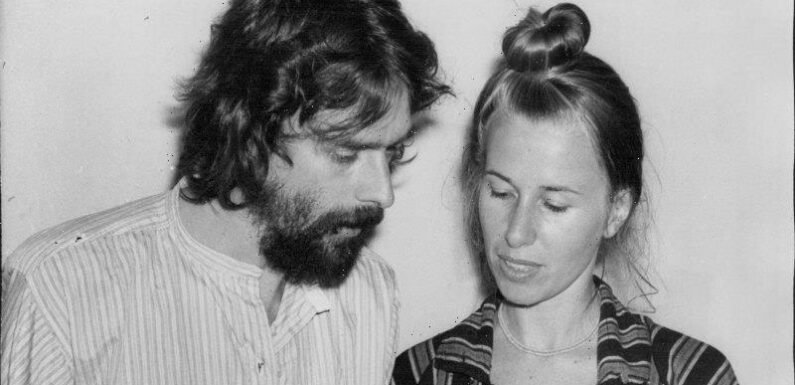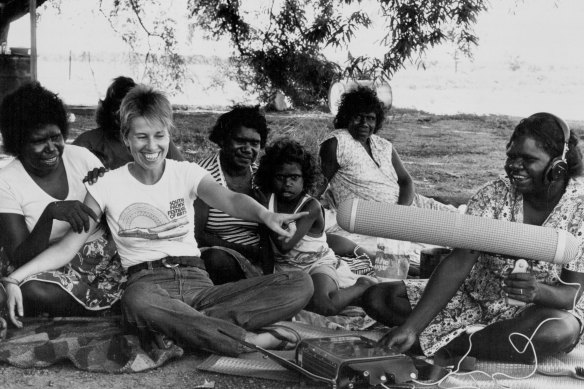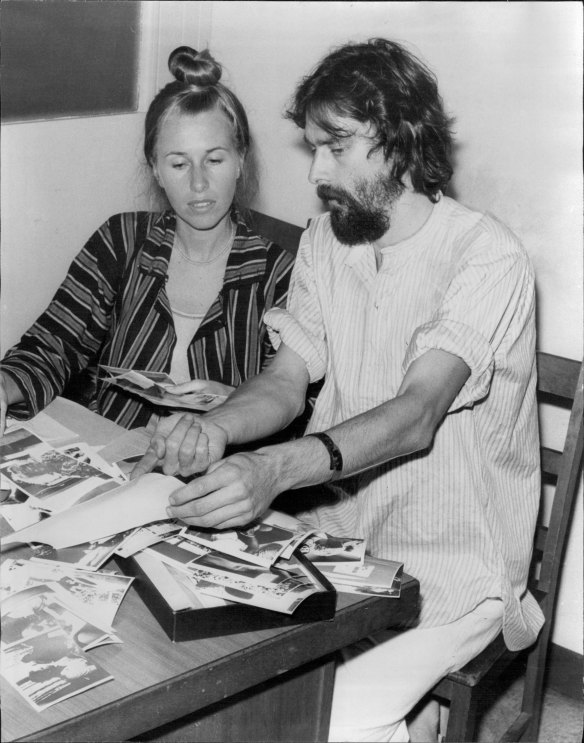
CAROLYN STRACHAN, 1946-2022
Carolyn Strachan, co-director of the groundbreaking Australian documentary Two Laws (1981), has died in New York after a long battle with cancer.
Strachan was born in 1946, and raised in Earlwood, the eldest of three children. The family home was surrounded by bushland reserve, engendering Strachan’s love of the bush, which stayed with her throughout her life. She wanted to be a war journalist, but when she left school in 1964 and applied for a cadetship at The Sydney Morning Herald she was advised to join the typing pool and work her way up to a women’s column.
Thelma Douglas, Carolyn Strachan, Bella Charlie, Narelle Charlie, Amy Friday and Linda McDinny in Borroloola, Northern Territory, in 1981. Credit:Alessandro Cavadini
Instead, she studied history and drama at the University of NSW, where she and fellow students agitated (unsuccessfully) for the inclusion of Aboriginal content in the course. After graduating with a bachelor of arts (UNSW 1969), and a diploma in education (UNE 1972), she taught at a technical high school in Melbourne, where she met the filmmaker Paul Cox and a motley crew of artists and aspiring filmmakers.
In 1972, she met the Italian activist and filmmaker Alessandro Cavadini, then working on the important historical film Ningla-A-Na (Hungry for Land). Strachan came on board to work on the film’s distribution, which involved months on the road during 1972 and 1973.
This brought Strachan into contact with the Italian migrant community and especially FILEF, the Federation of Italian Migrant Workers and Families, a progressive organisation of which Cavadini and his brother Fabio were members. Founding member Mario Abiezzi Abbiezzi was a well-known partisan who migrated to Australia in the early ’50s, establishing Bar Garibaldi in Darlinghurst, a hub of cultural activism from the 1960s until the early 1980s.
Both Strachan and Cavadini were active members of the Sydney Filmmakers Co-op and its publication Filmnews, and Strachan was also involved with the feminist film groups associated with the co-op and the legendary feminist filmmaker household, Lorraine, in Redfern.
Reddirt Films, formed by Strachan and Cavadini at the beginning of their personal and professional partnership, produced films and videos with Aboriginal communities made at the invitations of the communities and with their full participation. Their filmmaking practice evolved by sitting with their film’s audiences repeatedly, paying meticulous attention to how the film was being perceived.
Strachan attended the Ethnographic Film Conference, a stormy event held at AIATSIS in Canberra in May 1978, where one tradition of documentary and ethnographic filmmaking was giving way to another. The most important challenge came from Indigenous people demanding a say in how they were to be represented. This challenge led to Reddirt’s ground-breaking film Two Laws (1981).
Made with the Borroloola Tribal Council and in close consultation with the Yanyuwa/Garrwa people, the stories that the film told and the framing and composition of the work were all determined by the community in remote Northern Territory. This was highly innovative at the time. Almost 40 years later Yanyuwa and Garrwa collaborators have required that even young Indigenous filmmakers acknowledge Two Laws in their work.
Beyond Australia, the film achieved iconic status and was seen as a paradigm shift in documentary and ethnographic practice, on par with the achievement of French filmmaker Jean Rouch 30 years earlier.
Carolyn Strachan and Alessandro Cavadini in 1976.Credit:Martin James Brannan
Strachan and Cavadini believed “cinema truth” comes from collaboration between filmmaker and subjects, rather than the pretence that the filmmaker isn’t there. It was a filmmaking journey based on their shared commitment to the Aboriginal Land Rights movement of the 1970s, and their desire to find a new way of working in film.
In 1982, Strachan and Cavadini relocated to New York, committed to taking Two Laws to the rest of the world and to seek funding for future projects. There, Strachan met and married Vernon (Vinnie) Edwards in 1985. Their son Harry was born in 1989. They separated amicably in the mid-1990s. In 2003, Strachan met Joe Stillman, her partner until her death.
Strachan taught film at City University, New York, Fordham University, School of Visual Arts, City College, Borough of Manhattan Community College and at Hunter College.
In 2015, she obtained a PhD scholarship at Macquarie University. She subsequently divided her time between Sydney, where she was enrolled, and New York where her son resided. She had completed a substantial part of the research when she became ill.
In New York, she was the centre of a large, revolving group of expats and visiting Australians for more than four decades. Always great company, argumentative, stubborn and clever, and a welcoming friend to many, she loved to share her New York. Curious about everything, sometimes flirtatious and often beguiling in the very best sense, she was great fun to be with.
Her friends and family will remember the many good times, along with her generosity, passion, political commitment, and intellect. They will also remember her courage and extraordinary spirit in facing the challenges of her illness in recent years.
Carolyn Strachan is survived by her Australian family, her former partners, her son Harry and grandson Leo, and many friends all over the globe. Her ashes have been returned to Australia, buried at the base of a eucalyptus tree: her last wish.
Helen Grace, Merilyn Fairskye, Jason De Santolo and the Borroloola community
Most Viewed in National
From our partners
Source: Read Full Article

